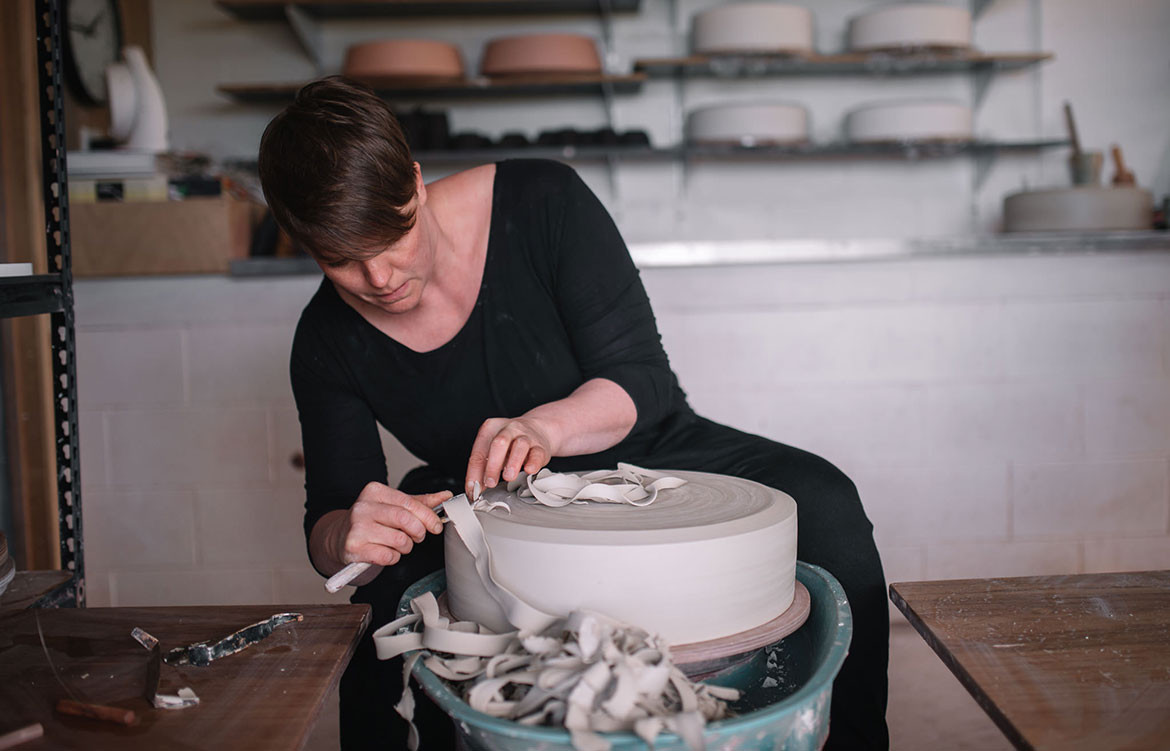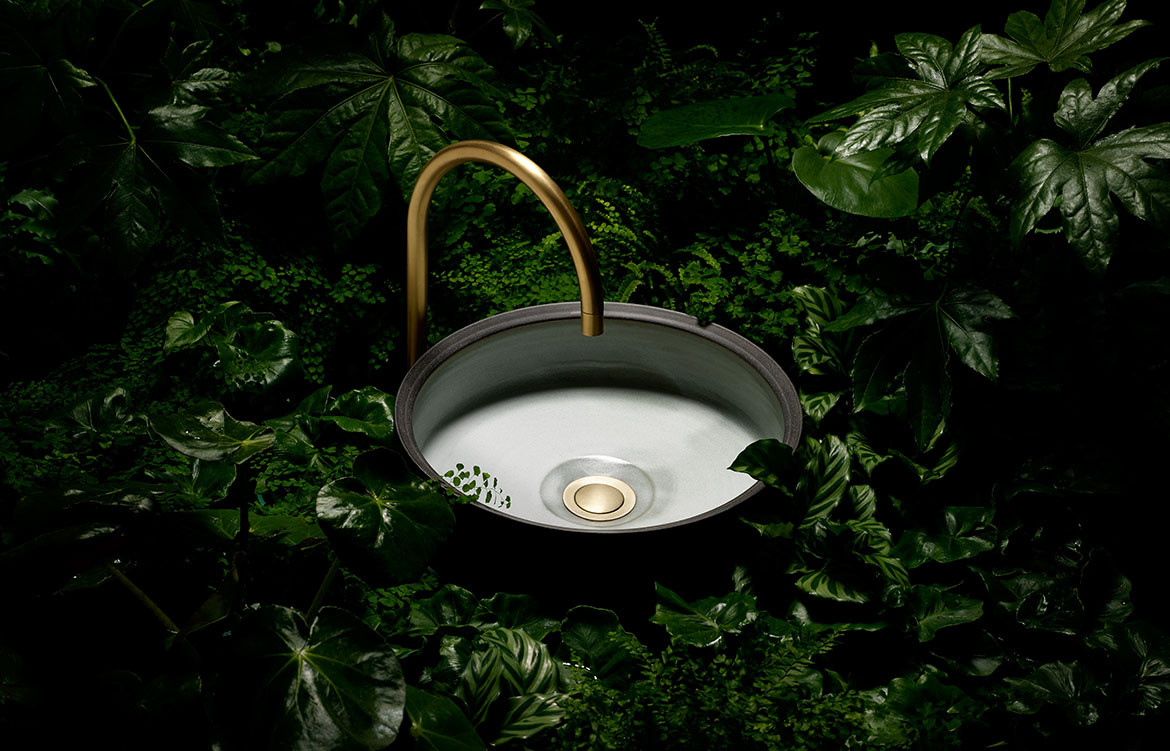What made you decide to produce a range of handmade ceramic benchtop basins?
All of our product designs typically come about through trying to answer a design problem that’s arisen from our architectural work. We had a couple of projects underway, including Arthur Street in West Hobart, and couldn’t find any basins on the market that quite fit our brief for something unique that has a strong narrative. So, we decided to source a range ourselves and Lindsey’s work was the perfect fit.
How did the resulting relationship with Lindsey Wherrett come about?
In our architectural work we’re interested in critical regionalism – architecture that has a strong connection to place, as such we push to use local materials, manufacturers and makers as much as we can. While we were looking at basin options for Arthur Street, the Director of our Tasmania Studio Josh Fitzgerald had seen Lindsey’s beautiful ceramics and suggested we commission her to create a new basin product. We were both so happy with the outcome that we decided to work with Lindsey to launch the basin as a commercial product available to the public.
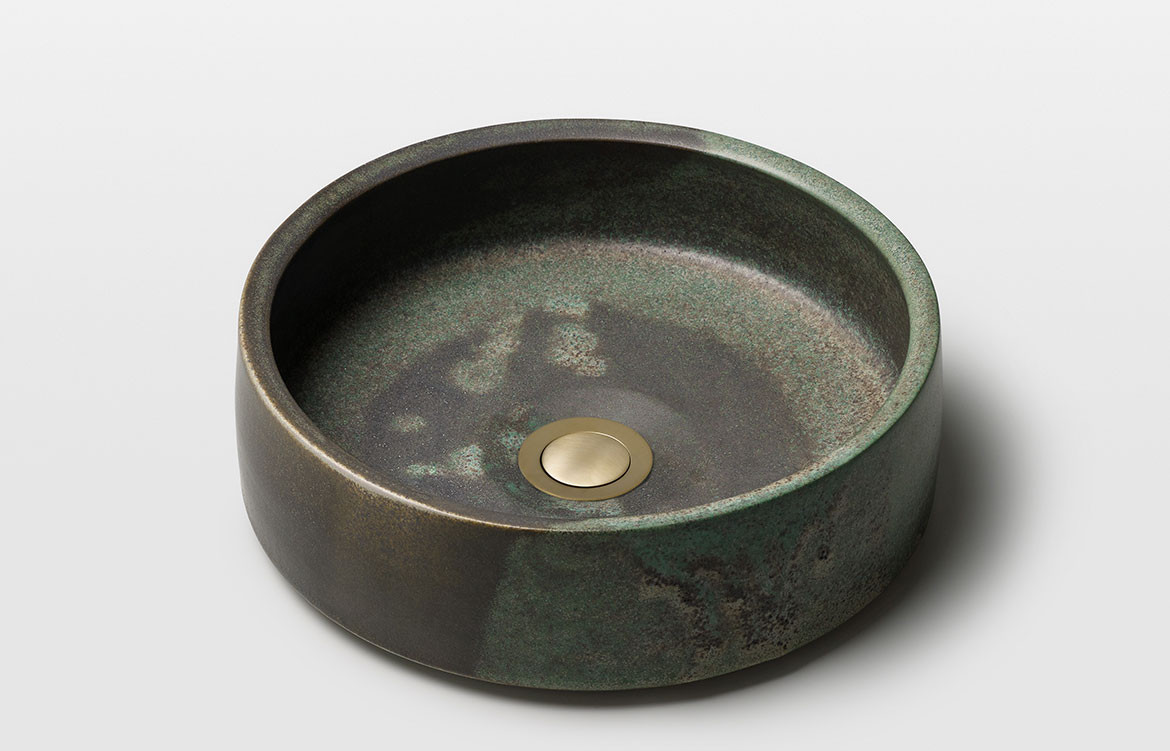
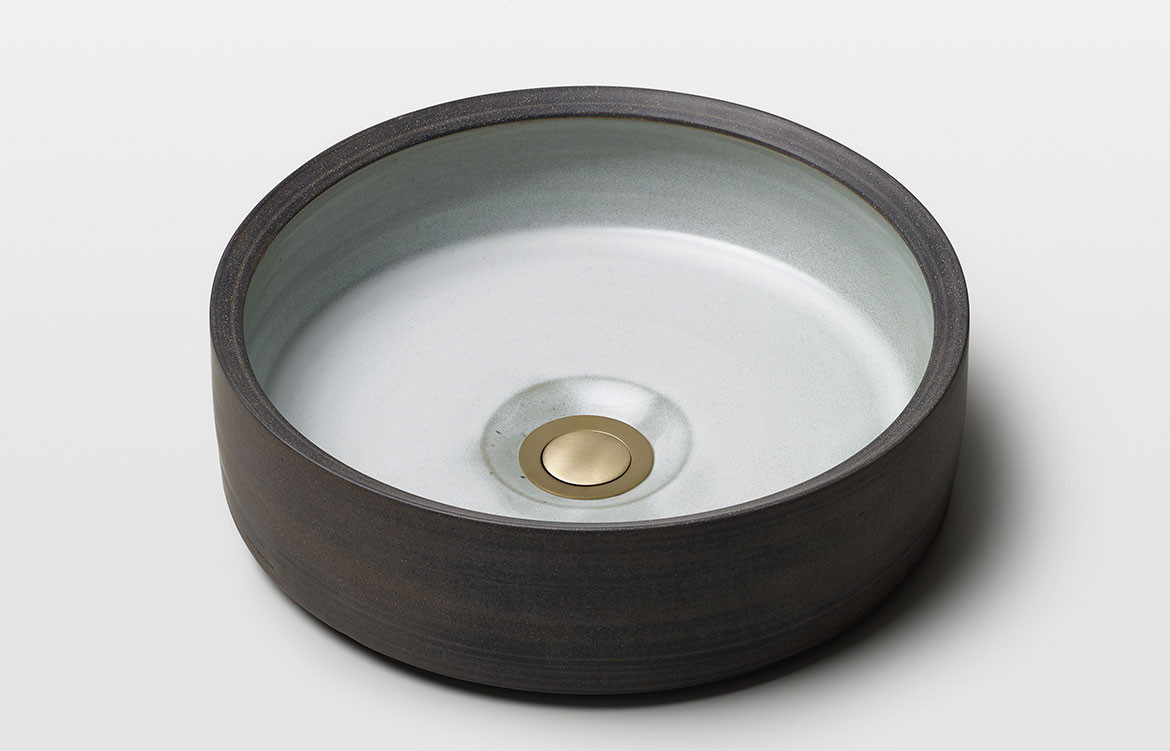
What distinguishes these basins from other products on the market?
All of Lindsey’s basins are handmade and fired in a gas kiln, which creates greater opportunity for subtle variations in the form and surface of each piece. No two basins are exactly the same. The live flame and adjustable atmosphere within the kiln give rise to a range of glazes that show movement, colour changes and crackle, which are simply not achievable in an industrially produced product. In addition to the aesthetic advantages, Lindsey has developed the range of clays and glazes to best suit the functional demands of a domestic hand basin.
Is there a design influence or inspiration behind the product?
The thing that really drew us to Lindsey and sparked the basin idea in Josh’s mind was her ceramic planters, which we absolutely love. We were really comfortable with her exploring similar ideas and building upon this work as a framework for the basins. She created a number of prototypes to begin with and we spoke about the technical details and aesthetic options. The existing colour palette in Lindsey’s work is reminiscent of Mount Wellington, which is where Lindsey’s studio is located, and the basins’ six available glazes are Ice, Storm, Lichen, Stone, Earth and Frost. My personal favourite is Lichen because it reminds me of the mossy stones that cover the mountain. It also has an interesting variation of colours, from greens and oranges through to black.
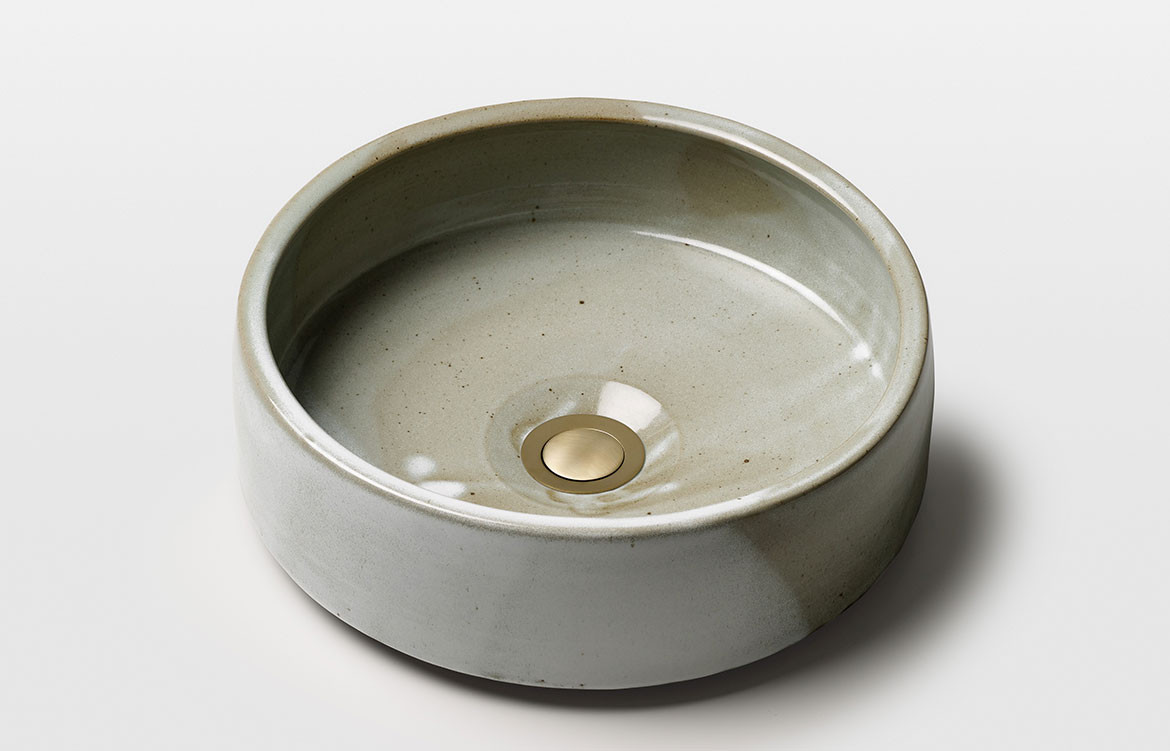
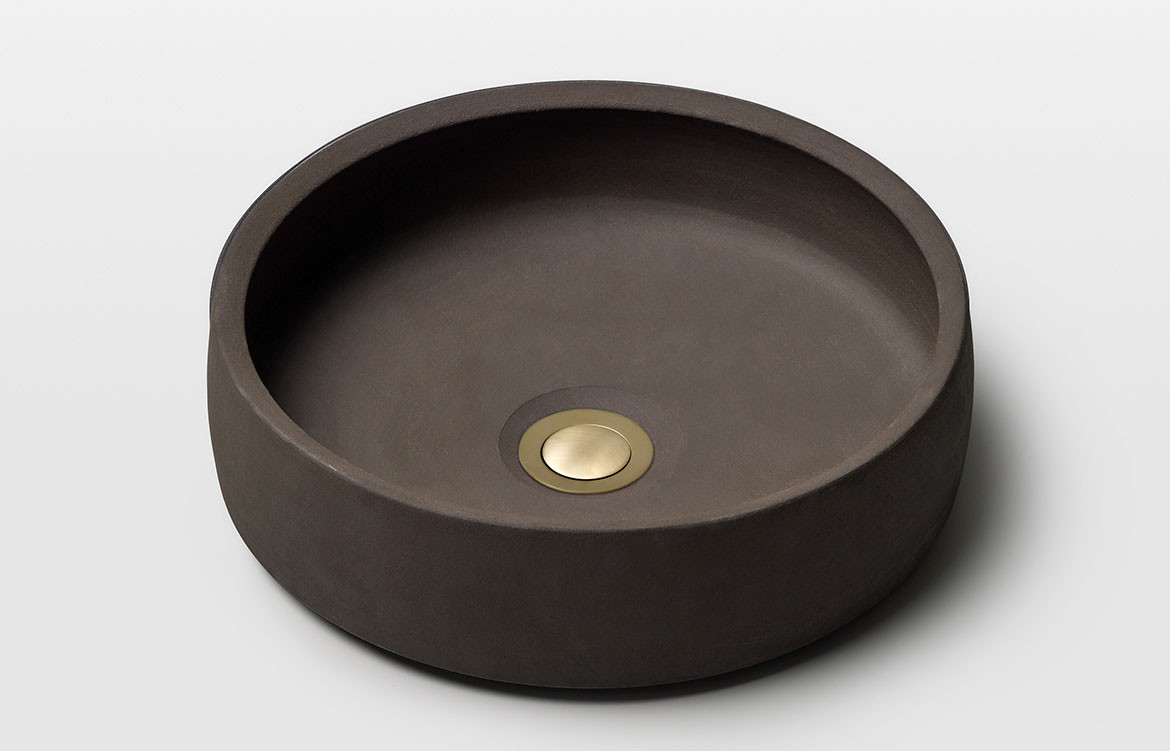
Does this product signal increased demand for custom-made bathroom products?
There is definitely a growing demand for bespoke locally made products. People want ‘realness’ over products that are mass produced and are looking for something special, something with texture, uniqueness and a sense of tactility that not everyone else has. They want a product or feature piece that stands out and has a story behind it. As a result, they are becoming more interested in understanding how things are made and who was involved in the process. We spend a lot of time creating bespoke architecture for people and using custom-made products not only adds a richness to the design, but also allows clients to have a greater sense of ownership and stronger connection to their home.
Archier
archier.com.au
Lindsay Wherrett
lindseywherrett.com
Cover photo by Ben Hosking
Product photography by Haydn Cattach
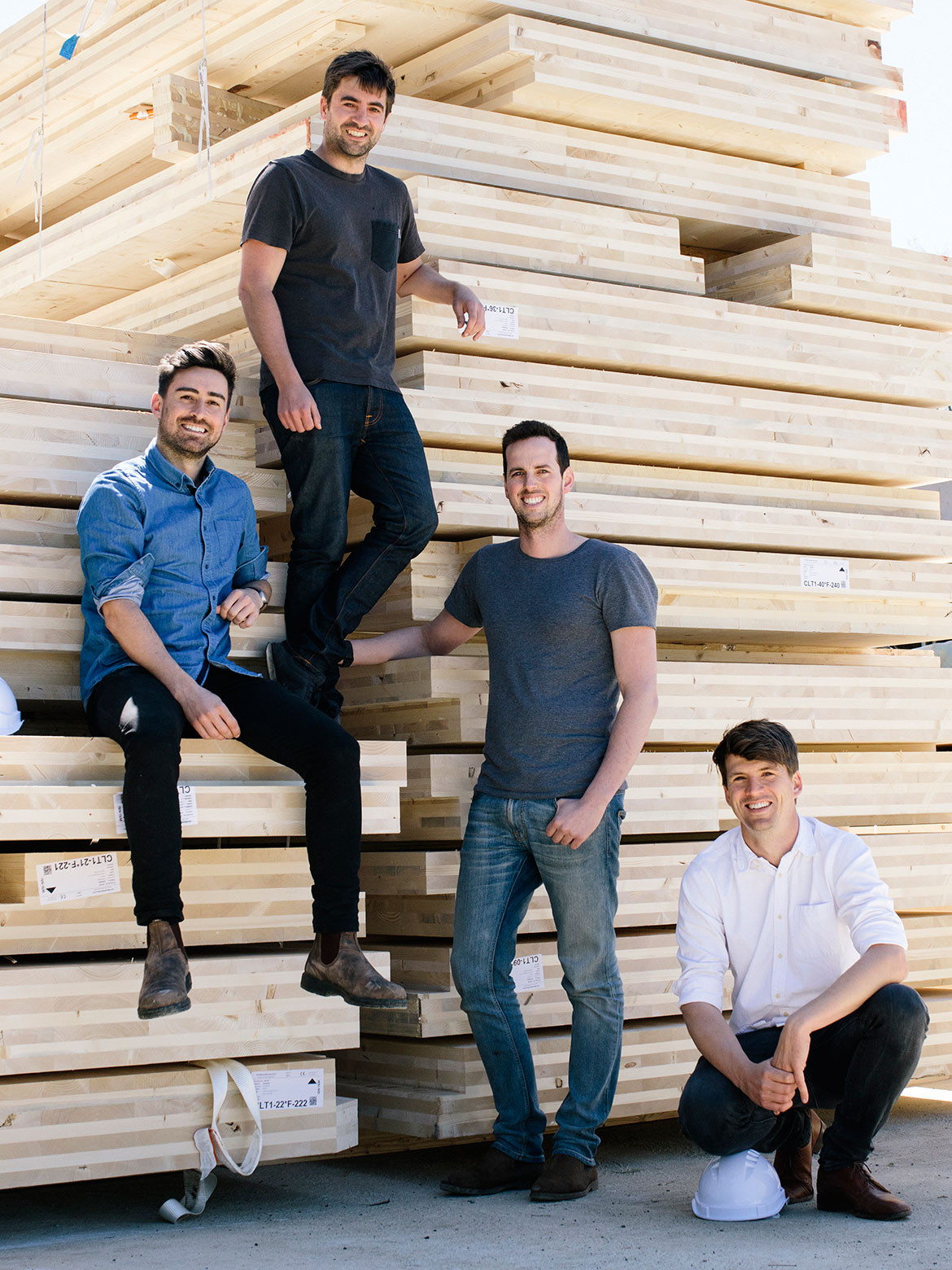 From L-R: Chris Haddad, Jon Kaitler, Josh FitzGerald, Chris Gilbert. Portrait by Benjamin Hosking
From L-R: Chris Haddad, Jon Kaitler, Josh FitzGerald, Chris Gilbert. Portrait by Benjamin Hosking